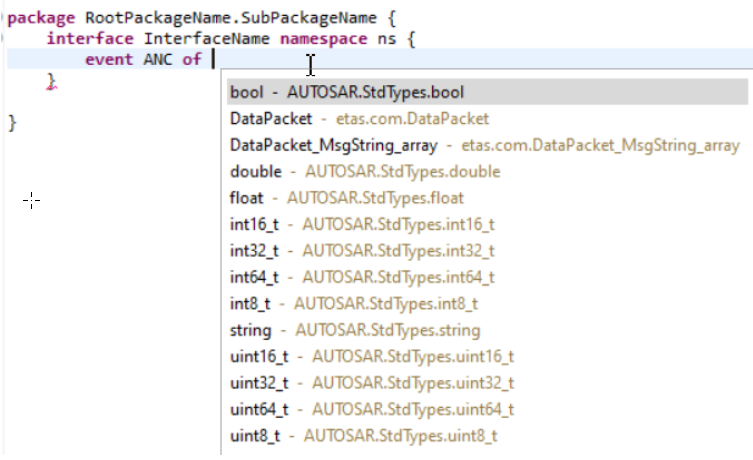ISOLAR-VRTE – the design tool for AUTOSAR Adaptive Applications and configuration of AUTOSAR manifest for the integration with the RTA-VRTE middleware.
- Application design simplified with our textual representation of the AUTOSAR application design.
- Fast implementation by using our generated C++ APIs for your application.
- Easy integration with our domain editors tailored to RTA-VRTE and the required settings.
- Faster iteration cycles through automation with our CLI application in your DevOps Pipeline
- Highly compatible with our data artefacts compliant to the AUTOSAR specification
Challenges
AUTOSAR is a widely spread standardization that allows companies in the automotive world to use their automotive applications on different models and hardware. It has proven itself through the usage over many years in thousands of cars, and lets customers focus on their application. While doing so, automotive middleware provides the necessary abstraction and ensures standard functionality like communication, persistency or diagnosis in a security and safety demanding domain.
Due to the comprehensive and highly configurable standard, there comes along a certain complexity customers need to manage. Furthermore, the collaboration in the definition of the standard leads to sometimes more than one solution that can be chosen and needs to be considered when an automotive project is developed.
Solution

ISOLAR-VRTE uses the ARTOP model, an implementation of the AUTOSAR standard as data model. By doing so, ETAS ensures compatibility between several products around the AUTOSAR specification.
Decades of experience in AUTOSAR Classic ensures that ETAS provides AUTOSAR Adaptive solutions to customers which simplify the configuration effort. Representing the AUTOSAR Application Design in a textual form rather than XML notation, ensures faster read/write for humans, especially simplifying the review on a git-flow driven approach.
The ISOLAR-VRTE domain editors are tailored to the middleware solution provided by RTA-VRTE and help to find the focus within vast AUTOSAR possibilities down to what is really required.
Application Design Editor

It uses a textual Domain Specific Language (DSL) to ease the design of Adaptive Applications. This editor supports conversions from ARXML to DSL files (data types, service interfaces), and from DSL to ARXML. This editor supports the design of
- Service Interfaces
- PER, PHM, CRYPTO and DIAG Interfaces
- C++ datatypes (incl. arrays and structures), and namespaces
- Application Software Components
Domain Editors

Multiple editors for different domains of the middleware such as Communication, Execution Management or Diagnostics guide the Integrator through the configuration parameter. Live validations perform fast feedback on correct and conflict-free configuration settings.
AUTOSAR Model Editor and Navigation
The xAAP editor provides full AUTOSAR Adaptive configuration support plus extended SDG support, since it reads AUTOSAR SDGDef elements, which can make SDGs appear similar to usual parameters including type-specific editing widgets and a description in the tooltip. Inside the editor, users can choose between a file content grouping and a merged view, which helps to keep the overview, if configurations are split over more than one file.
The xAAP Navigator displays all AUTOSAR elements in a tree-view. It allows navigation in AUTOSAR elements as well as in AUTOSAR files. Multiple Filter- and Display-Options are available to efficiently get an overview on the project and start from there focusing on the data.
- Vehicle computers with AUTOSAR Adaptive architectures
- Design of AUTOSAR Adaptive user applications, configuration of the RTA-VRTE platform applications, and integration platform for ECU deployment.
- Integration in CI / CD Pipelines